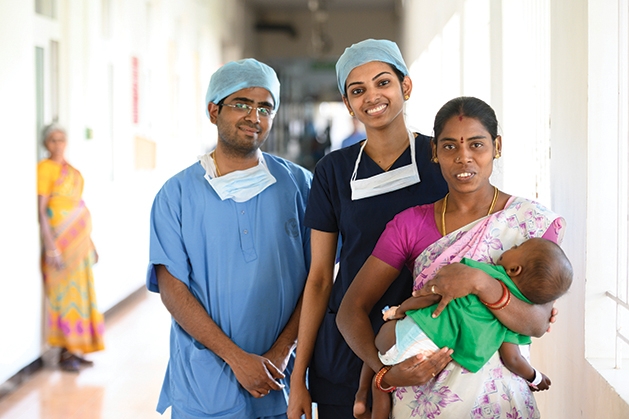
Congenital heart disease (CHD) is the seventh leading cause of death in infants across the world. Even though CHD is common, global access to care for heart illnesses is tricky. This is why Children’s Heartlink exists.
Based in Edina and founded in 1969, Children’s Heartlink got its start in Vietnam when a medic sent three kids with heart illnesses to Minneapolis for heart surgery. Kids continued to be sent to the U.S. during the next few decades. In 1993, Children’s Heartlink began to branch out into other countries and now focuses its efforts in Brazil, China, India, Malaysia and Vietnam.
Those five countries hold approximately 40 percent of the world’s population, and all have a need for help. For example, in Brazil, only one out of every three children with CHD get access to the care he/she needs. The statistics go on about the need for CHD care in each of these countries.
Children’s Heartlink now operates in a capacity-building, or as some call it, a train-the-trainer model. The staff go and train a team, with volunteers from the U.S., Canada and the United Kingdom, at a hospital on how to treat heart illnesses. That hospital then becomes a center of excellence and can train other hospitals in other areas, allowing the amount of trained professionals to grow exponentially. “The whole team gets trained at the hospital,” says Jackie Boucher, president of Children’s Heartlink. “This includes nurses, surgeons, dietitians and anyone else who’d be involved.”
Earlier this year, Children’s Heartlink announced a new partnership with the Medtronic Foundation. It is a three-year partnership and allows Children’s Heartlink access to Medtronic employees and volunteers and provides funding, which will expand outreach and research. “Corporate sponsors aren’t just monetary,” Boucher says. “Access to people is awesome.”
Just like everyone else, the staff had to adapt because of COVID-19. Trainings had to go virtual, which ended up being a pretty positive experience. “We were actually able to reach more people,” Boucher says. “We could reach multiple groups with one training.”
There is new technology in the works called the Microsoft Hololens. Children’s Heartlink could use it to improve its training even more. It is a pair of glasses capable of transmitting what the user is seeing to another audience. “A physician in China could wear them during a medical procedure, and a physician in the United Kingdom could watch and see what’s going on,” Boucher says.
Being a nonprofit organization, Children’s Heartlink relies on donations and sponsors to function, and it doesn’t take a whole lot of money to make a difference. “People always think large donations are necessary, and that’s just not the case,” Boucher says. “Just a single gift of $240 or 12 monthly gifts of $20 sponsors training for one nurse who can teach 100 families a year how to care for their child who is recovering after congenital heart care surgery.”
Boucher also says they are always looking for volunteers with a wide variety of skills and knowledge. Everything from helping with events in the community to expertise in the medical field is welcomed. Those willing to donate their time or wisdom are asked to email hello@childrensheartlink.org to get in touch. “The biggest thing is education,” Boucher says. “We need to advocate for why this cause is so important.”
To donate, go to childrensheartlink.org, and click on the donate tab in the upper-righthand corner of the page.
Children's Heartlink
@childrensheartlink
@cheartlink
Children’s Heartlink









